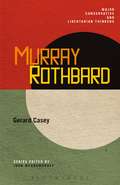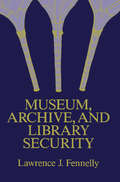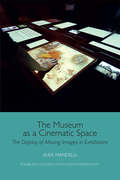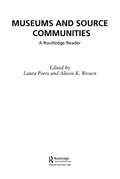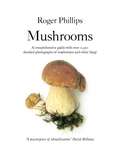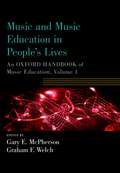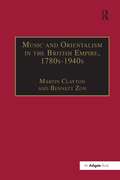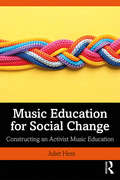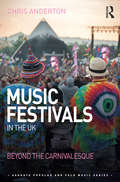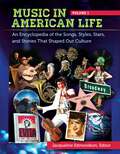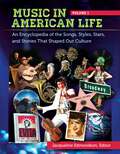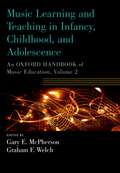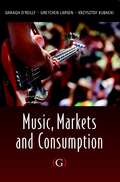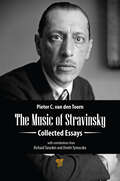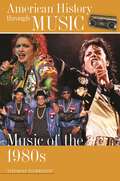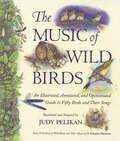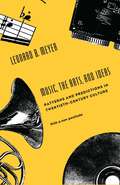- Table View
- List View
Murray Rothbard (Major Conservative and Libertarian Thinkers)
by Gerard CaseyMurray Rothbard (1926-1995) was an economist, historian, philosopher, and legal theoretician. His work was unified by a passionate and resolute commitment to a libertarianism that may be characterized as 'anarcho-capitalism' and which implied a belief that even the legal system may be provided privately without the need for a coercive collective authority. Hence, anarcho-capitalists envisage a society where the traditional role of government is wholly subsumed by private, profit-making enterprises and all social relationships are ultimately founded upon consent. Rothbard's unique intellectual contribution was to build this system of thought from many pre-existing but previously disparate strands and to develop it to its logical conclusion. Rothbard's starting points were the notions of methodological individualism, natural rights theory, and individual self-ownership. He showed that if we wish these seriously then the justification for government falls away. According to Rothbard government can only be 'justified' if we abandon the notion that individuals have the right to determine what to do with their own bodies, a step he believed to be unconscionable.
Museum, Archive, and Library Security
by Lawrence J. FennellyMuseum, Archive, and Library Security provides an introduction to the security programs of museums and other park facilities. This book discusses the mechanism that provides for the protection of information, collections, equipment, personnel, and physical facilities of museums.Organized into seven parts encompassing 30 chapters, this book begins with an overview of the security programs of the National Park Service. This text then examines the quality of security personnel and its proper training, as well as its most efficient utilization and allocation. Other chapters consider the standard instruction in how to implement new security procedures by staff members. This book discusses as well the significance of good security for the protection of fine arts of any nature. The final chapter deals with global concern on the prevention, protection, import, or export of cultural property.This book is a valuable resource for security directors, archivists, curators, maintenance personnel, historic preservation specialists, and librarians.
The Museum as a Cinematic Space: The Display of Moving Images in Exhibitions (Edinburgh Studies in Film and Intermediality)
by Elisa MandelliMoving images have become an increasingly common feature in a wide range of museums, which are frequently populated with screens and audio-visual projections. But when did films start to be displayed in museum galleries? And what are the issues at stake when showing moving images in exhibition spaces? With an innovative and strongly interdisciplinary theoretical framework, this book offers an extensive investigation of the use of audio-visuals in exhibition design. Highlighting the continuities and fractures between different periods, contexts and practices, Elisa Mandelli shows the deep influence of audio-visuals on the configuration of the exhibition space, as well as on the relationship between museums and their visitors.
The Museum as a Cinematic Space: The Display of Moving Images in Exhibitions (Edinburgh Studies in Film and Intermediality)
by Elisa MandelliMoving images have become an increasingly common feature in a wide range of museums, which are frequently populated with screens and audio-visual projections. But when did films start to be displayed in museum galleries? And what are the issues at stake when showing moving images in exhibition spaces? With an innovative and strongly interdisciplinary theoretical framework, this book offers an extensive investigation of the use of audio-visuals in exhibition design. Highlighting the continuities and fractures between different periods, contexts and practices, Elisa Mandelli shows the deep influence of audio-visuals on the configuration of the exhibition space, as well as on the relationship between museums and their visitors.
Museums and Source Communities: A Routledge Reader
by Alison K. Brown Laura PeersThis volume combines some of the most influential published research in this emerging field with newly commissioned essays on the issues, problems and lessons involved in collaborating museums and source communities. Focusing on museums in the UK, North America and the Pacific, the book highlights three areas which demonstrate the new developments most clearly: the museum as field site or 'contact zone' - a place which source community members enter for purposes of consultation and collaboration visual repatriation - the use of photography to return images of ancestors, historical moments and material heritage to source communities exhibition case studies - these are discussed to reveal the implications of cross-cultural and collaborative research for museums, and how such projects have challenged established attitudes and practices. As the first overview of its kind, this collection will be essential reading for museum staff working with source communities, for community members involved with museum programmes, and for students and academics in museum studies and social anthropology.
Museums and Source Communities: A Routledge Reader
by Laura Peers Alison K. BrownThis volume combines some of the most influential published research in this emerging field with newly commissioned essays on the issues, problems and lessons involved in collaborating museums and source communities. Focusing on museums in the UK, North America and the Pacific, the book highlights three areas which demonstrate the new developments most clearly: the museum as field site or 'contact zone' - a place which source community members enter for purposes of consultation and collaboration visual repatriation - the use of photography to return images of ancestors, historical moments and material heritage to source communities exhibition case studies - these are discussed to reveal the implications of cross-cultural and collaborative research for museums, and how such projects have challenged established attitudes and practices. As the first overview of its kind, this collection will be essential reading for museum staff working with source communities, for community members involved with museum programmes, and for students and academics in museum studies and social anthropology.
Mushrooms: A comprehensive guide to mushroom identification (A\pan Original Ser.)
by Roger Phillips'Roger Phillips has written the best mushroom book I know.' Hugh Fearnley-WhittingstallThe culmination of over thirty years' work, Roger Phillips's authoritative and superbly illustrated reference work is packed with the most up-to-date information and original photographs. The essential illustrated mycological encyclopedia, this book is also clear, user friendly and will appeal to a wide range of readers. Unsurpassed in both illustrative and descriptive detail, Mushrooms contains over 1,250 photographs, often showing the specimens in various stages of growth, and includes all the latest botanical and common names as well as current ecological information on endangered species. Having sold more than 750,000 copies in Europe of his previous title on mushrooms, Roger Phillips's Mushrooms once again sets the benchmark. Quite simply, nobody with an interest in the subject can afford to be without this book.
Music and Music Education in People's Lives: An Oxford Handbook of Music Education, Volume 1 (Oxford Handbooks)
by Gary E. McPherson and Graham F. WelchMusic and Music Education in People's Lives is one of five paperback books derived from the foundational two-volume Oxford Handbook of Music Education. Designed for music teachers, students, and scholars of music education, as well as educational administrators and policy makers, this first book in the set provides a framework for understanding the content and context of music education, and for future action within the profession. A broad examination of the philosophical, psychological, cultural, international, and contextual issues that underpin a wide variety of teaching environments or individual attributes is paired with 25 relevant and insightful commentaries from established scholars and music educators. Taken as a whole, Music and Music Education in People's Lives gives clear direction to how the discipline of music education can achieve even greater political, theoretical and professional strength. Contributors Harold F. Abeles, Nick Beach, Wayne D. Bowman, Liora Bresler, Patricia Shehan Campbell, Richard Colwell, Robert A. Cutietta, David J. Elliott, Sergio Figueiredo, Lucy Green, Wilfried Gruhn, David Hargreaves, Sarah Hennessy, Liane Hentschke, Donald A. Hodges, Christopher M. Johnson, Estelle R. Jorgensen, Andreas C. Lehmann, Richard Letts, Håkan Lundström, Raymond MacDonald, Clifford K. Madsen, Andrew J. Martin, Marie McCarthy, Katrina McFerran, Gary E. McPherson, Bradley Merrick, Dorothy Miell, Graça Mota, Bruno Nettl, Bengt Olsson, Susan A. O'Neill, Johnmarshall Reeve, Bennett Reimer, James Renwick, Huib Schippers, Wendy L. Sims, David J. Teachout, Rena Upitis, Peter R. Webster, Graham F. Welch, Paul Woodford
Music and Music Education in People's Lives: An Oxford Handbook of Music Education, Volume 1 (Oxford Handbooks)
Music and Music Education in People's Lives is one of five paperback books derived from the foundational two-volume Oxford Handbook of Music Education. Designed for music teachers, students, and scholars of music education, as well as educational administrators and policy makers, this first book in the set provides a framework for understanding the content and context of music education, and for future action within the profession. A broad examination of the philosophical, psychological, cultural, international, and contextual issues that underpin a wide variety of teaching environments or individual attributes is paired with 25 relevant and insightful commentaries from established scholars and music educators. Taken as a whole, Music and Music Education in People's Lives gives clear direction to how the discipline of music education can achieve even greater political, theoretical and professional strength. Contributors Harold F. Abeles, Nick Beach, Wayne D. Bowman, Liora Bresler, Patricia Shehan Campbell, Richard Colwell, Robert A. Cutietta, David J. Elliott, Sergio Figueiredo, Lucy Green, Wilfried Gruhn, David Hargreaves, Sarah Hennessy, Liane Hentschke, Donald A. Hodges, Christopher M. Johnson, Estelle R. Jorgensen, Andreas C. Lehmann, Richard Letts, Håkan Lundström, Raymond MacDonald, Clifford K. Madsen, Andrew J. Martin, Marie McCarthy, Katrina McFerran, Gary E. McPherson, Bradley Merrick, Dorothy Miell, Graça Mota, Bruno Nettl, Bengt Olsson, Susan A. O'Neill, Johnmarshall Reeve, Bennett Reimer, James Renwick, Huib Schippers, Wendy L. Sims, David J. Teachout, Rena Upitis, Peter R. Webster, Graham F. Welch, Paul Woodford
Music and Orientalism in the British Empire, 1780s-1940s: Portrayal of the East
by Bennett ZonFilling a significant gap in current scholarship, the fourteen original essays that make up this volume individually and collectively reflect on the relationship between music and Orientalism in the British Empire over the course of the long nineteenth century. The book is in four themed sections. 'Portrayal of the East' traces the routes from encounter to representation and restores the Orient to its rightful place in histories of Orientalism. 'Interpreting Concert Music' looks at one of the principal forms in which Orientalism could be brought to an eager and largely receptive - yet sometimes resistant - mass market. 'Words and Music' investigates the confluence of musical and Orientalist themes in different genres of writing, including criticism, fiction and travel writing. Finally, 'The Orientalist Stage' discusses crucial sites of Orientalist representation - music theatre and opera - as well as tracing similar phenomena in twentieth-century Hindi cinema. These final chapters examine the rendering of the East as 'unachievable and unrecognizable' for the consuming gaze of the western spectator.
Music and Orientalism in the British Empire, 1780s-1940s: Portrayal of the East
by Bennett ZonFilling a significant gap in current scholarship, the fourteen original essays that make up this volume individually and collectively reflect on the relationship between music and Orientalism in the British Empire over the course of the long nineteenth century. The book is in four themed sections. 'Portrayal of the East' traces the routes from encounter to representation and restores the Orient to its rightful place in histories of Orientalism. 'Interpreting Concert Music' looks at one of the principal forms in which Orientalism could be brought to an eager and largely receptive - yet sometimes resistant - mass market. 'Words and Music' investigates the confluence of musical and Orientalist themes in different genres of writing, including criticism, fiction and travel writing. Finally, 'The Orientalist Stage' discusses crucial sites of Orientalist representation - music theatre and opera - as well as tracing similar phenomena in twentieth-century Hindi cinema. These final chapters examine the rendering of the East as 'unachievable and unrecognizable' for the consuming gaze of the western spectator.
Music Education for Social Change: Constructing an Activist Music Education
by Juliet HessMusic Education for Social Change: Constructing an Activist Music Education develops an activist music education rooted in principles of social justice and anti-oppression. Based on the interviews of 20 activist-musicians across the United States and Canada, the book explores the common themes, perceptions, and philosophies among them, positioning these activist-musicians as catalysts for change in music education while raising the question: amidst racism and violence targeted at people who embody difference, how can music education contribute to changing the social climate? Music has long played a role in activism and resistance. By drawing upon this rich tradition, educators can position activist music education as part of a long-term response to events, as a crucial initiative to respond to ongoing oppression, and as an opportunity for youth to develop collective, expressive, and critical thinking skills. This emergent activist music education—like activism pushing toward social change—focuses on bringing people together, expressing experiences, and identifying (and challenging) oppressions. Grounded in practice with examples integrated throughout the text, Music Education for Social Change is an imperative and urgent consideration of what may be possible through music and music education.
Music Education for Social Change: Constructing an Activist Music Education
by Juliet HessMusic Education for Social Change: Constructing an Activist Music Education develops an activist music education rooted in principles of social justice and anti-oppression. Based on the interviews of 20 activist-musicians across the United States and Canada, the book explores the common themes, perceptions, and philosophies among them, positioning these activist-musicians as catalysts for change in music education while raising the question: amidst racism and violence targeted at people who embody difference, how can music education contribute to changing the social climate? Music has long played a role in activism and resistance. By drawing upon this rich tradition, educators can position activist music education as part of a long-term response to events, as a crucial initiative to respond to ongoing oppression, and as an opportunity for youth to develop collective, expressive, and critical thinking skills. This emergent activist music education—like activism pushing toward social change—focuses on bringing people together, expressing experiences, and identifying (and challenging) oppressions. Grounded in practice with examples integrated throughout the text, Music Education for Social Change is an imperative and urgent consideration of what may be possible through music and music education.
Music Festivals in the UK: Beyond the Carnivalesque (Ashgate Popular and Folk Music Series)
by Chris AndertonThe outdoor music festival market has developed and commercialised significantly since the mid-1990s, and is now a mainstream part of the British summertime leisure experience. The overall number of outdoor music festivals staged in the UK doubled between 2005 and 2011 to reach a peak of over 500 events. UK Music (2016) estimates that the sector attracts over 3.7 million attendances each year, and that music tourism as a whole sustains nearly 40,000 full-time jobs. Music Festivals in the UK is the first extended investigation into this commercialised rock and pop festival sector, and examines events of all sizes: from mega-events such as Glastonbury Festival, V Festival and the Reading and Leeds Festivals to ‘boutique’ events with maximum attendances as small as 250. In the past, research into festivals has typically focused either on their carnivalesque heritage or on developing managerial tools for the field of Events Management. Anderton moves beyond such perspectives to propose new ways of understanding and theorising the cultural, social and geographic importance of outdoor music festivals. He argues that changes in the sector since the mid-1990s, such as professionalisation, corporatisation, mediatisation, regulatory control, and sponsorship/branding, should not necessarily be regarded as a process of transgressive 'alternative culture’ being co-opted by commercial concerns; instead, such changes represent a reconfiguration of the sector in line with changes in society, and a broadening of the forms and meanings that may be associated with outdoor music events.
Music Festivals in the UK: Beyond the Carnivalesque (Ashgate Popular and Folk Music Series)
by Chris AndertonThe outdoor music festival market has developed and commercialised significantly since the mid-1990s, and is now a mainstream part of the British summertime leisure experience. The overall number of outdoor music festivals staged in the UK doubled between 2005 and 2011 to reach a peak of over 500 events. UK Music (2016) estimates that the sector attracts over 3.7 million attendances each year, and that music tourism as a whole sustains nearly 40,000 full-time jobs. Music Festivals in the UK is the first extended investigation into this commercialised rock and pop festival sector, and examines events of all sizes: from mega-events such as Glastonbury Festival, V Festival and the Reading and Leeds Festivals to ‘boutique’ events with maximum attendances as small as 250. In the past, research into festivals has typically focused either on their carnivalesque heritage or on developing managerial tools for the field of Events Management. Anderton moves beyond such perspectives to propose new ways of understanding and theorising the cultural, social and geographic importance of outdoor music festivals. He argues that changes in the sector since the mid-1990s, such as professionalisation, corporatisation, mediatisation, regulatory control, and sponsorship/branding, should not necessarily be regarded as a process of transgressive 'alternative culture’ being co-opted by commercial concerns; instead, such changes represent a reconfiguration of the sector in line with changes in society, and a broadening of the forms and meanings that may be associated with outdoor music events.
Music in American Life [4 volumes]: An Encyclopedia of the Songs, Styles, Stars, and Stories That Shaped Our Culture [4 volumes]
by Jacqueline EdmondsonA fascinating exploration of the relationship between American culture and music as defined by musicians, scholars, and critics from around the world.Music has been the cornerstone of popular culture in the United States since the beginning of our nation's history. From early immigrants sharing the sounds of their native lands to contemporary artists performing benefit concerts for social causes, our country's musical expressions reflect where we, as a people, have been, as well as our hope for the future. This four-volume encyclopedia examines music's influence on contemporary American life, tracing historical connections over time.Music in American Life: An Encyclopedia of the Songs, Styles, Stars, and Stories That Shaped Our Culture demonstrates the symbiotic relationship between this art form and our society. Entries include singers, composers, lyricists, songs, musical genres, places, instruments, technologies, music in films, music in political realms, and music shows on television.
Music in American Life [4 volumes]: An Encyclopedia of the Songs, Styles, Stars, and Stories That Shaped Our Culture [4 volumes]
A fascinating exploration of the relationship between American culture and music as defined by musicians, scholars, and critics from around the world.Music has been the cornerstone of popular culture in the United States since the beginning of our nation's history. From early immigrants sharing the sounds of their native lands to contemporary artists performing benefit concerts for social causes, our country's musical expressions reflect where we, as a people, have been, as well as our hope for the future. This four-volume encyclopedia examines music's influence on contemporary American life, tracing historical connections over time.Music in American Life: An Encyclopedia of the Songs, Styles, Stars, and Stories That Shaped Our Culture demonstrates the symbiotic relationship between this art form and our society. Entries include singers, composers, lyricists, songs, musical genres, places, instruments, technologies, music in films, music in political realms, and music shows on television.
Music Learning and Teaching in Infancy, Childhood, and Adolescence: An Oxford Handbook of Music Education, Volume 2 (Oxford Handbooks)
by Graham F. Welch Gary E. McPhersonMusic Learning and Teaching in Infancy, Childhood, and Adolescence is one of five paperback books derived from the foundational two-volume Oxford Handbook of Music Education. Designed for music teachers, students, and scholars of music education, as well as educational administrators and policy makers, the second book in this set explores a broad array of key issues, concepts, and debates related to music learning and teaching in three phases of a child's development. The first section provides an expanded view of infancy and early childhood, embracing a key theme that most young children's early music-making is improvised and used to communicate with others and the self. These chapters demonstrate the importance of "motherese" or "parentese" to young children's overall development, the extraordinary diversity and richness of children's early musical engagement, and how this can be viewed as a resource for further learning. The second section is devoted to the learning and teaching of music during the middle years of childhood, when music is often a mandated part of the school curriculum. While recognizing the enormous cultural and national differences, chapters in this section give an overview of many varied and innovative forms of musical learning and teaching globally. The authors address issues related to the types of teachers who provide music instructions to children internationally, how they were educated and trained, and how various nations organize their curriculum in ways that provide children with access and opportunities to engage with music in the classroom. The third section focuses on the musical experiences and development of adolescents aged 12 to 18. These chapters explore the role of music in the lives of young people-including how they use and relate to music, how music educators can best meet students' needs, and the types of musical engagement that can either empower or disempower students through involvement in school music. Contributors Mayumi Adachi, Randall Everett Allsup, Janet R. Barrett, Margaret S. Barrett, Brydie-Leigh Bartleet, Lily Chen-Hafteck, Richard Colwell, Sharon G. Davis, George M. DeGraffenreid, Steven C. Dillon, Magne I. Espeland, Martin Fautley, Eve Harwood, Lee Higgins, Beatriz Ilari, Neryl Jeanneret, Chee-Hoo Lum, Stephen Malloch, Esther Mang, Kathryn Marsh, Gary E. McPherson, Oscar Odena, Chris Philpott, S. Alex Ruthmann, Eric Shieh, Gary Spruce, Johannella Tafuri, Sandra E. Trehub, Colwyn Trevarthen, Kari K. Veblen, Graham F. Welch, Heidi Westerlund, Jackie Wiggins, Ruth Wright, Susan Young
Music Learning and Teaching in Infancy, Childhood, and Adolescence: An Oxford Handbook of Music Education, Volume 2 (Oxford Handbooks)
Music Learning and Teaching in Infancy, Childhood, and Adolescence is one of five paperback books derived from the foundational two-volume Oxford Handbook of Music Education. Designed for music teachers, students, and scholars of music education, as well as educational administrators and policy makers, the second book in this set explores a broad array of key issues, concepts, and debates related to music learning and teaching in three phases of a child's development. The first section provides an expanded view of infancy and early childhood, embracing a key theme that most young children's early music-making is improvised and used to communicate with others and the self. These chapters demonstrate the importance of "motherese" or "parentese" to young children's overall development, the extraordinary diversity and richness of children's early musical engagement, and how this can be viewed as a resource for further learning. The second section is devoted to the learning and teaching of music during the middle years of childhood, when music is often a mandated part of the school curriculum. While recognizing the enormous cultural and national differences, chapters in this section give an overview of many varied and innovative forms of musical learning and teaching globally. The authors address issues related to the types of teachers who provide music instructions to children internationally, how they were educated and trained, and how various nations organize their curriculum in ways that provide children with access and opportunities to engage with music in the classroom. The third section focuses on the musical experiences and development of adolescents aged 12 to 18. These chapters explore the role of music in the lives of young people-including how they use and relate to music, how music educators can best meet students' needs, and the types of musical engagement that can either empower or disempower students through involvement in school music. Contributors Mayumi Adachi, Randall Everett Allsup, Janet R. Barrett, Margaret S. Barrett, Brydie-Leigh Bartleet, Lily Chen-Hafteck, Richard Colwell, Sharon G. Davis, George M. DeGraffenreid, Steven C. Dillon, Magne I. Espeland, Martin Fautley, Eve Harwood, Lee Higgins, Beatriz Ilari, Neryl Jeanneret, Chee-Hoo Lum, Stephen Malloch, Esther Mang, Kathryn Marsh, Gary E. McPherson, Oscar Odena, Chris Philpott, S. Alex Ruthmann, Eric Shieh, Gary Spruce, Johannella Tafuri, Sandra E. Trehub, Colwyn Trevarthen, Kari K. Veblen, Graham F. Welch, Heidi Westerlund, Jackie Wiggins, Ruth Wright, Susan Young
Music, Markets And Consumption
by Daragh O'Reilly Gretchen Larsen Krzysztof KubackiThis is one of the first academically rigorous texts covering the whole topic of popular music as a major market, and its marketing and in the contemporary connected world. There are books written by popular music commentators but Music, Markets and Consumption aims to give a fully international and scholarly analysis integrating the unique popular music sector both within arts marketing and current marketing and consumption theories. It gives the student and specialist a full overview and coverage of music, marketing and cultural policy, and the emerging academic study of the sector. It will collect and analyse a range of key issues in the field including: * The increasing engagement with marketing and consumer studies theory; * The analysis of music as ‘product’; * The economics, branding and commercialisation of music globally; * The impact of technology and evolution of venues on music consumption; * The consumer- fans and fandom; * The fast developing international literature. It is a much needed new perspective for students and researchers of music and arts marketing, cultural consumption and consumption theories and those in the fields of Marketing, Arts, Music and Cultural Studies. The book is also essential reading for those professionally involved in music marketing and cultural policy.
The Music of Stravinsky: Collected Essays
by Pieter C. van den ToornThe most celebrated of Western composers in the twentieth century, Igor Stravinskymay have been the greatest as well. Stretching across forty or so years, the essays in this volume address the dynamics of Igor Stravinsky’s music from a variety of analytical, critical, and aesthetic angles. Underscored are the features of melody, harmony, rhythm, and form that would remain consistently a part of Stravinsky’s oeuvre regardless of the changes in orientation from the Russian period to the neoclassical and the early serial. The Rite of Spring (1913), Les Noces (1917–23), the Symphony of Psalms (1930), and the Symphony in Three Movements (1945) are discussed in detail, as are many of the circumstances attending their conception. Other concerns include the composer’s "formalist" aesthetics and the strict performing style he pursued as an interpreter and conductor of his music.
The Music of Stravinsky: Collected Essays (Music Since 1900 Ser.)
by Pieter C. van den ToornThe most celebrated of Western composers in the twentieth century, Igor Stravinskymay have been the greatest as well. Stretching across forty or so years, the essays in this volume address the dynamics of Igor Stravinsky’s music from a variety of analytical, critical, and aesthetic angles. Underscored are the features of melody, harmony, rhythm, and form that would remain consistently a part of Stravinsky’s oeuvre regardless of the changes in orientation from the Russian period to the neoclassical and the early serial. The Rite of Spring (1913), Les Noces (1917–23), the Symphony of Psalms (1930), and the Symphony in Three Movements (1945) are discussed in detail, as are many of the circumstances attending their conception. Other concerns include the composer’s "formalist" aesthetics and the strict performing style he pursued as an interpreter and conductor of his music.
Music of the 1980s (American History through Music)
by Thomas HarrisonBeyond coverage of mainstream 80s music, such as "hair band" hard rock, pop, new wave, and rap, this compilation of essential musical artists also covers genres like classical, jazz, outlaw country, and music theater.Popular music in the United States during the 1980s is well known for imports from abroad, such as A-ha, Def Leppard, Falco, and Men at Work, as well as homegrown American rock acts such as Guns 'N Roses, Huey Lewis and the News, Bon Jovi, and Poison. But there were many other types of genres of music that never received airplay on the radio or MTV that also experienced significant evolutions or growth in that decade.Music of the 1980s examines the key artists in specific genres of popular music: pop, hard rock/heavy metal, rock, and country. No other reference book for students has previously explored the surprisingly diverse categories of hard rock and heavy metal music with such detail and depth. Additionally, a chapter focuses on the prominent artists and composers of less-mainstream genres for specialized audiences, including music theater, jazz, and classical music.
The Music of Wild Birds: An Illustrated, Annotated, and Opinionated Guide to Fifty Birds and Their Songs
by Judy PelikanOne hundred years ago, F. Schuyler Mathews, an erudite naturalist and birder, theorized that birds sing first for love of music, and second for love of the lady. To expand on his theory, he actually scored the songs of birds in the wild. His charming text and bird-by-bird annotations were compiled into a guide called Field Book of Wild Birds and Their Music. This extraordinary work has now been lavishly illustrated and adapted for a new audience. Each bird is meticulously rendered by artist Judy Pelikan in full-color illustrations that feature not only the birds, but also their nests, eggs, and feathers. And every song is represented by its written musical score, which Mathews expertly explains in a way that both musicians and non-musicians can enjoy. As Mathews points out, the music of wild birds is everywhere--in poems, children's nursery songs, as well as in the works of the great composers: the Black-billed Cuckoo's call appears near the close of Beethoven's Pastoral Symphony; the Nashville Warbler's song is found in the opening bars of Rossini's Carovale, and the Meadowlark's song is remarkably like the first two bars of Alfredo's song in La Traviata. He reveals how a bird's character is reflected in its song: the Baltimore Oriole is a sharp-billed, sharp-witted character, and his remarks are as incisive and crisp as the toots of a steam whistle. And he reminds us of the words of our great poets--Wordsworth, Emerson, Sir Walter Scott--and their descriptions of the very same birds and their music. This classic, useful, and completely original guide will put a song into the heart of novice and experienced birder alike.
Music, the Arts, and Ideas: Patterns and Predictions in Twentieth-Century Culture
by Leonard B. MeyerMeyer makes a valuable statement on aesthetics, criteria for assessing great works of music, compositional practices and theories of the present day, and predictions of the future of Western culture. His postlude, written for the book's twenty-fifth anniversary, looks back at his thoughts on the direction of music in 1967.
